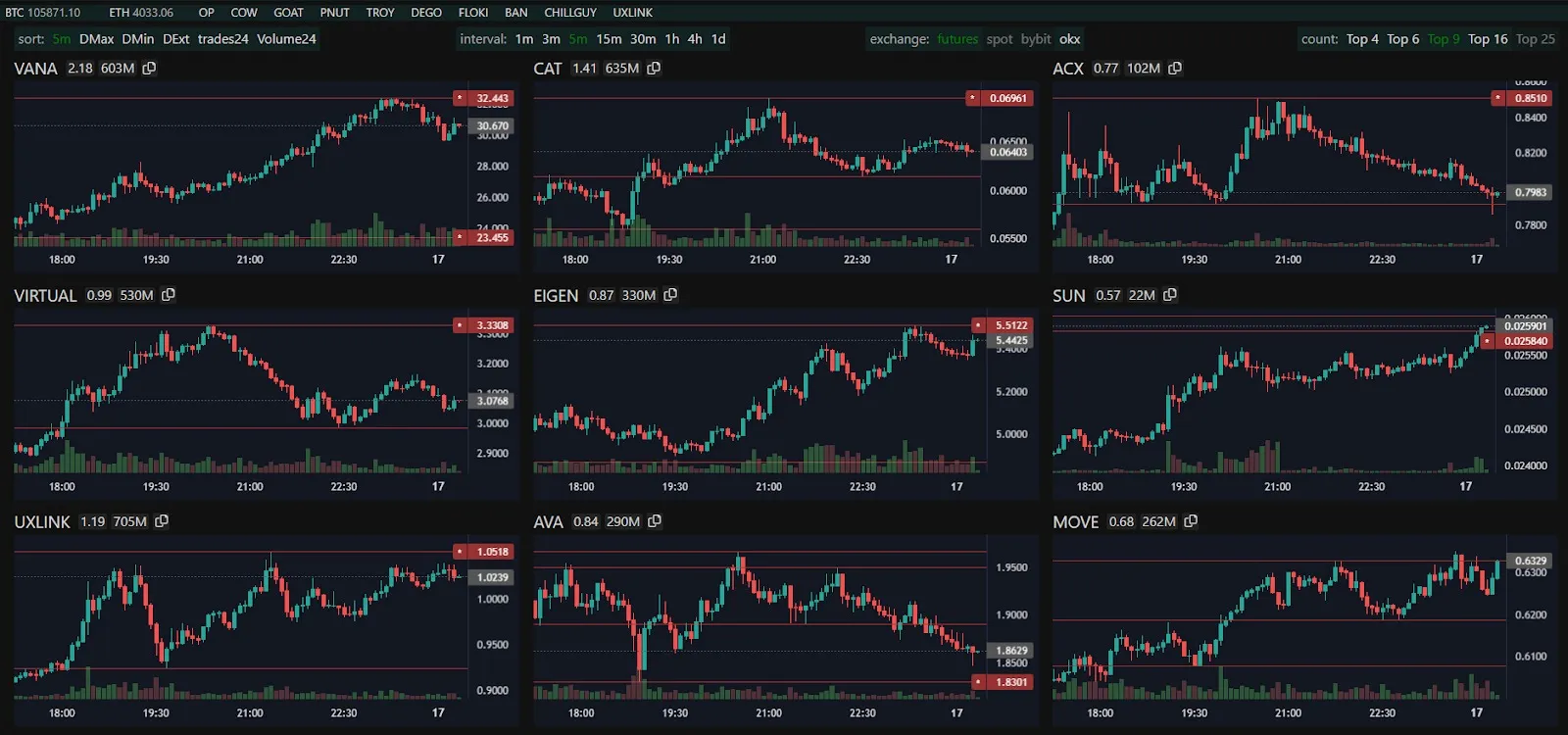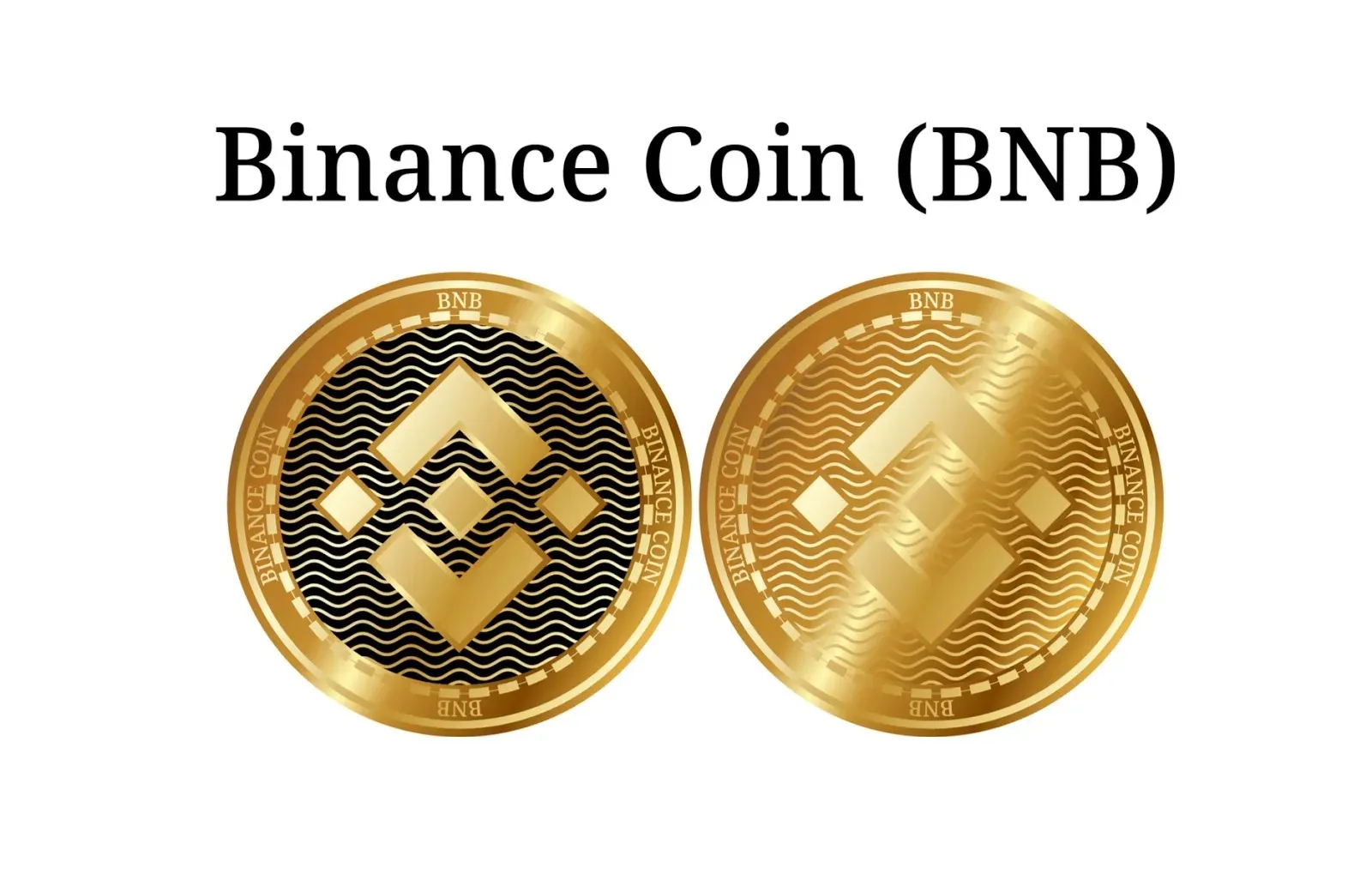
Investing in Cryptocurrency - Where to Start, Advantages and Disadvantages
Cryptocurrencies continue to attract the attention of a large number of people from cycle to cycle. However, before you invest your money, you need to understand the basic mechanics, risks, and opportunities of this market.
Cryptocurrency - what it is

Cryptocurrency is a digital asset powered by blockchain technology. It has no physical expression and exists solely in digital format. The main characteristics of cryptocurrency are decentralization, secure transactions, and the ability to be used as a medium of exchange and store of value.
Preparing to work with cryptocurrency
To get started, you will need to gain access to the cryptocurrency market, it is provided by centralized exchanges (CEX).
Choosing a cryptocurrency exchange

The first step is to choose a platform to interact with cryptocurrencies. There are centralized (CEX) and decentralized (DEX) exchanges. For beginners, platforms such as Binance, Bybit, OKX, which offer user-friendly interfaces and educational materials, are suitable.
Registration and verification on the exchange
Using the Bybit exchange as an example, let’s consider the registration process, which includes several stages:
-
Creating an account using an email or phone number.
-
Setting a password and two-factor authentication to increase security.
-
Identity verification (KYC), which includes uploading documents (passport, ID card) and address verification.
More details about passing verification and funding an exchange account are described in our articles:
Cryptocurrency market analysis
Fundamental and technical analysis are widely used to analyze various indicators in the cryptocurrency market.
Fundamental analysis
Fundamental analysis helps to assess the intrinsic value of a cryptocurrency. It involves the study of the following aspects:
-
The technology and the idea behind the project.
-
The development team.
-
Assessment of market capitalization and trading volumes.
-
News and partnerships.
Technical analysis

Technical analysis is commonly understood as the study of price charts and trading volumes. The main tools:
-
Graphical support and resistance levels.
-
Indicators (RSI, MACD and others).
-
Analysis of classical technical patterns.
Types of investing
The modern crypto market offers many approaches to investing, among which everyone can choose the option that will be the most suitable in terms of opportunities and needs. Trading bots, which with minimal human participation can bring stable profitability through trading, are also successful and can also be considered as an option for investing one’s funds.
Decentralized Finance (DeFi)
DeFi provides access to financial services without intermediaries. These include:
-
Staking. Placing cryptocurrencies on the platform to keep the network running and earn rewards.
-
Liquidity Farming. Providing funds to liquidity pools on decentralized exchanges (e.g. Uniswap) to receive a portion of the commissions.
-
Lending and borrowing. The ability to lend cryptocurrency at interest or borrow by leaving collateral.
Non-Futurable Tokens (NFT)
NFTs are unique digital assets used in various fields:
-
Art. Buying and selling unique works of art by artists.
-
Gaming assets. Tokens representing characters or items in games.
-
Collectibles. Unique cards, memes, and other assets whose value is determined by their rarity.
Stablecoins
Stablecoins are cryptocurrencies tied to the value of traditional assets (e.g. USDT, USDC):
-
Used to protect capital from volatility.
-
Convenient for transferring funds between platforms.
-
Often used in trading and for staking rewards.
Investment programs on exchanges
Many centralized exchanges offer programs such as:
-
Fixed Income Deposits. Placing funds on the exchange at interest for a specified period of time.
-
Staking. Receiving income for storing cryptocurrency in the exchange’s system.
-
Earn programs. The opportunity to earn through asset allocation in various financial products.
Holding
Holding (or HODLing) is the long-term holding of cryptocurrency in order to profit from price growth. Basic principles:
Investing in proven projects such as Bitcoin and Ethereum.
Refraining from panicking when prices fall.
A long-term strategy for years to come.
Launchpads
Launchpads are platforms for launching new projects through an initial token offering (IDO). Advantages:
-
Opportunity to buy tokens of promising projects at a low price.
-
High profit potential if the project becomes successful.
-
Requires analyzing the project team and market potential.
Advantages and disadvantages of investing in cryptocurrencies
Advantages:
-
High potential returns. Many cryptocurrencies have shown a significant increase in value in a short period of time, leading to the conclusion that it is possible to earn high returns on successful investments.
-
Decentralization. The lack of a central regulator reduces the likelihood of manipulation by governments or large companies.
-
Accessibility for beginners. You can invest even with minimal amounts. Some platforms allow you to start with investments from $10.
-
Variety of opportunities. Different ways of investing are available in the cryptosphere: staking, DeFi, NFT, holding, trading.
-
Global access. You don’t need to be physically located in any particular place to work with cryptocurrencies. All you need is access to the internet.
-
Technology advancement. Investing in cryptocurrencies supports the development of new technologies (blockchain and smart contracts).
-
Full openness. Absolutely all transactions go into the blockchain and are available for verification.
Disadvantages:
-
High volatility. Large price fluctuations can cause significant losses, especially for novice investors.
-
Lack of regulation. In some countries, the cryptocurrency market is unregulated, increasing the risks of fraud and instability.
-
Security risks. The possibility of hacker attacks on exchanges and wallets, as well as user errors (e.g., loss of keys) can lead to loss of funds.
-
Complexity of use. Many processes, such as DeFi or technical analysis, require significant training time to understand.
-
Environmental concerns. Mining some cryptocurrencies (e.g. Bitcoin) consumes huge amounts of energy, which has drawn criticism from environmentalists.
-
Fraud. There are many unscrupulous projects and schemes on the market promising quick earnings.
Tips for investing in cryptocurrencies
1. Study the market
Before you start investing, it is important to learn the basics of how the cryptocurrency industry works. Understanding how cryptocurrencies work will help you make more informed decisions. Study:
-
The major cryptocurrencies (e.g. Bitcoin, Ethereum, Binance Coin).
-
The technologies behind cryptocurrencies.
-
Important factors affecting prices (e.g. news, regulation, technological developments).
2. Portfolio Diversification:
Don’t invest all of your funds in any one cryptocurrency. Divide your investment portfolio among several assets. This will reduce the risks associated with a fall in the value of one of the assets. Experienced investors recommend adhering to the principle of diversification:
-
Major cryptocurrencies: Bitcoin, Ethereum.
-
Altcoins: More risky but with potential for significant growth (e.g. Solana, Polkadot).
-
Stablecoins: For portfolio stabilization (e.g. USDT, USDC).
3. Research cryptocurrencies before buying
Always familiarize yourself with the project before buying a cryptocurrency:
-
The purpose of the cryptocurrency: What is it supposed to solve? For example, if it’s Ethereum, it’s a platform for decentralized applications.
-
Team: Who is behind the project? Do they have experience in blockchain development?
-
Roadmap: What are the development plans? What are the project’s goals for the coming years?
-
Tokenomics: How is the issuance and distribution of tokens structured? Are there risks of inflation or too much concentration of tokens in the hands of the team?
4. Assess volatility
Cryptocurrencies are highly volatile, meaning their value can change dramatically in a short period of time. Be prepared for significant fluctuations and keep an eye on the market:
-
Research the historical volatility of your chosen assets.
-
Plan exits if the price reaches a certain level (set limits for losses and gains).
-
It is important to realize that the price of a cryptocurrency can drop by 30-50% in a matter of weeks.
5. Use only funds that you are willing to lose
Investing in cryptocurrencies involves a higher risk, so never invest funds that you need for life or those that you cannot afford to lose. The cryptocurrency market can be unpredictable, and even long-term investments may not guarantee a profit.
6. Choose reliable platforms for trading
Use only trusted and secure exchanges for all cryptocurrency transactions. Some popular cryptocurrency exchanges are:
-
Binance: One of the world’s largest exchanges.
-
Bybit: Easy to use exchange with high level of security.
-
OKX: Strong reputation and feature-rich.
Also choose exchanges that provide two-factor authentication and other security measures.
7. Use cold wallets for storage
If you plan to store cryptocurrency long-term, use cold wallets that are not connected to the internet and provide a higher level of security. This protects your funds from possible hacker attacks.
8. Keep an eye on news and regulation
The cryptocurrency market just like the stock market depends on news and government regulations. Study up-to-date news so you don’t miss changes in legislation or key events that could affect asset values:
-
Cryptocurrency regulation in different countries.
-
Cryptocurrency ban or adoption notices (e.g. China bans, or conversely, cryptocurrency adoption in different countries).
-
Technological updates and forks.
9. Manage the risks
Investing in cryptocurrencies requires discipline and strategy. Risk management will help protect your capital:
-
Stop Loss: Set a stop loss to limit potential losses.
-
Don’t invest everything in one asset: Risk is reduced with diversification.
-
Evaluate the market regularly: Watch trends and adjust your strategy and risk management.
10. Control emotions
The cryptocurrency market is known for its unpredictability, and sudden price fluctuations can trigger emotions that will adversely affect your decision making. It is important to remain calm:
-
Don’t sell assets on panic if the price has fallen.
-
Don’t buy on euphoria if the market is booming.
-
Have a clear plan and stick to it to avoid impulsive decisions.
11. Long-term perspective
If you don’t want to engage in day trading, calculate for a long-term investment. Many cryptocurrencies such as Bitcoin, Ethereum, Solana, BNB have shown significant growth in the long term despite short-term fluctuations.
12. avoid scams
Be wary of offers that seem too attractive to be true. Fraud is a common problem in the cryptocurrency market:
-
Fake ICOs (initial coin offerings): These can be organized to raise funds and disappear with your money.
-
“Quick money” schemes: If someone promises you a ‘guaranteed profit’, it’s most likely a scam.
Popular cryptocurrencies for investment
There are many assets in the cryptocurrency market, but a few stand out for their stability, capitalization, and potential for growth. Here are a few popular cryptocurrencies that are considered good investment options over the long haul:
1. Bitcoin (BTC)

-
Description: Bitcoin is the world’s first cryptocurrency. It has become not only a major asset in the cryptocurrency market, but also a digital gold, serving as a hedge against inflation and a potential long-term asset.
-
Features:
-
Limited issuance (maximum 21 million coins), which creates scarcity and helps maintain value.
-
Broad backing across multiple countries and companies, including Tesla and MicroStrategy.
-
High liquidity and reliability.
- Outlook: Bitcoin continues to be the dominant asset in the cryptocurrency market and is considered a solid long-term investment.
2. Ethereum (ETH)

-
Description: Ethereum is not a regular cryptocurrency, but a platform for creating decentralized applications (dApps) and smart contracts. Ethereum allows developers to launch projects and create tokens based on their network.
-
Features:
-
Ethereum 2.0, an update that promises improvements in network speed and efficiency.
-
Used in decentralized finance (DeFi) and NFTs (non-fungible tokens).
-
A constantly updated ecosystem that supports various projects.
- Outlook: Ethereum remains the foundation for a host of new technologies and projects, including DeFi and NFT, making it one of the most promising cryptocurrencies.
3. Binance Coin (BNB).

-
Description: Binance Coin is a token created by cryptocurrency exchange Binance. It is actively used to cover transaction fees on the exchange and has many other uses in the Binance ecosystem.
-
Features:
-
Low commissions on Binance when paying in BNB.
-
Burning coins to reduce issuance, which increases the value of the remaining coins.
-
Used in the Binance Smart Chain (BSC) network to support smart contracts and decentralized applications.
- Outlook: BNB holds great promise given the growing popularity of Binance and its ecosystem.
4. Solana (SOL)

-
Description: Solana is a blockchain platform with high bandwidth and low transaction fees. It was designed to provide faster and cheaper transactions compared to the Ethereum network.
-
Features:
-
High transaction execution speed and low transaction fees.
-
Extensive support for DeFi and NFT.
-
Actively growing ecosystem with a large number of new projects.
- Prospects: Solana has great potential for growth, especially given its technological foundation that allows it to handle high transaction volumes.
5. Polkadot (DOT).

-
Description: Polkadot is a blockchain platform that allows different blockchains to interact with each other and create an interconnected ecosystem.
-
Features:
-
Ability to integrate different blockchains, which gives the project more flexibility.
-
Development in interconnectivity and scalability.
-
Strong team and community.
- Outlook:
Polkadot has distinctive features that make it useful for creating interoperable blockchain ecosystems, which may be in demand in the future.
Promising cryptocurrencies and crypto markets
While the already mentioned cryptocurrencies are popular and quite mature projects, there are many new, promising assets and markets that may show growth in the coming years.
1. Chainlink (LINK)
-
Description: Chainlink is a decentralized oracle network that allows smart contracts to interact with external data (e.g. commodity prices, exchange rates).
-
Outlook: With the growing popularity of DeFi and smart contracts, Chainlink could become an important part of the ecosystem by providing data for such projects.
2. Avalanche (AVAX)
-
Description: Avalanche is a specialized platform for building decentralized applications and private blockchains. It is focused on solving the scalability problem and reducing fees.
-
Outlook: Attracts attention due to its high performance and flexibility. It can be a powerful alternative to Ethereum and other platforms.
3. DeFi and NFT projects
-
DeFi: Decentralized finance is becoming increasingly popular. Protocols such as Uniswap, Aave, Compound and others are creating new ways to generate income without any intermediaries. For investors, this creates opportunities for profits in an unstable financial system.
-
NFT: Non-fungible tokens allow for the creation of unique digital assets. NFTs are growing rapidly and projects like OpenSea are creating a market for unique digital objects.
4. Layer 2 solutions
-
Description: With the development of blockchain technologies such as Ethereum, there has been a need to address scalability issues. Layer 2 solutions (e.g. ZKsync, Optimism and Arbitrum) provide cheaper transactions without overloading the underlying blockchain.
-
Outlook: These technologies significantly improve user experience and reduce transaction costs on large platforms.
5. Web3 and decentralized applications (dApps)
-
Description: Web3 is a new concept of the internet based on blockchain, it allows users to control their data and participate in the management of platforms.
-
Outlook: Web3 projects continue to gain popularity and could significantly change the internet space in the future, creating new investment opportunities.
Conclusion
Investing in cryptocurrencies is more risky than other traditional assets, but the potential returns can be many times higher. Success depends on a competent approach, market research and readiness to change.
FAQ
1. Is it possible to start investing with a small capital?
Yes, many exchanges allow you to start with a minimum investment, for example, $10. In turn, you can start mastering trading with $1 with the help of Veles trading bots.
2. What is a cold wallet?
It is a device for storing cryptocurrency offline, which increases security.
3. Do I have to pay taxes on cryptocurrency income?
In most countries, cryptocurrency income is taxable. Check the legal side in your region.
4. How to avoid scammers?
Do not invest in projects without a proven track record and avoid offers with the promise of guaranteed profits.